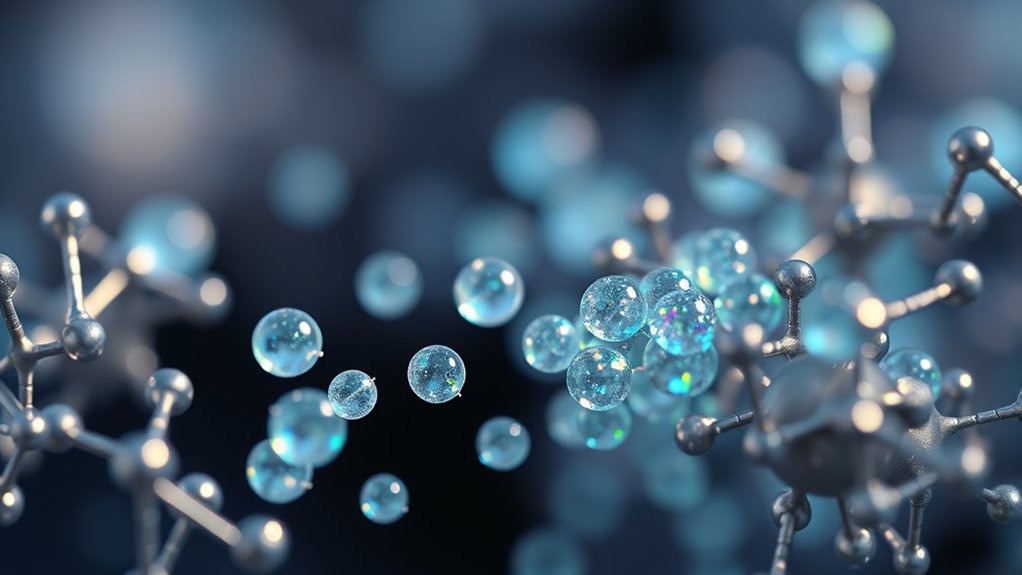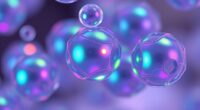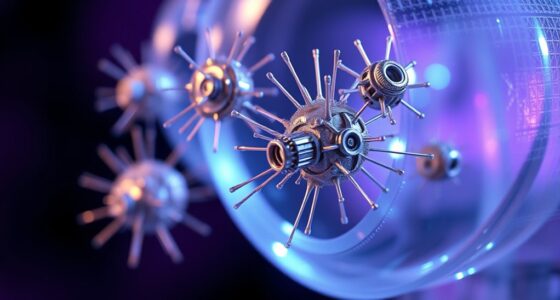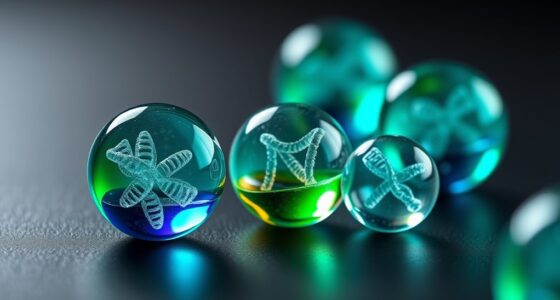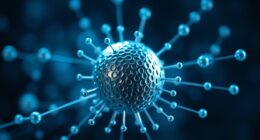Nanoenzymes and artificial enzymes are engineered catalysts that mimic natural enzymes, offering enhanced stability, cost-effectiveness, and versatility for uses in medicine, environmental cleanup, and industry. They come in various types, including inorganic and organic options, and are made through different synthesis methods. Their applications range from disease detection and drug delivery to pollutant degradation. Understanding their features, benefits, and challenges can help you explore how they’re transforming multiple fields—continue to learn more about their fascinating potential.
Key Takeaways
- Nanoenzymes are nanomaterials that mimic natural enzyme catalytic functions with enhanced stability and tunable properties.
- Artificial enzymes include inorganic and organic catalysts designed to replicate or improve natural enzyme activity.
- They are widely used in medicine, environmental remediation, and biosensing due to their robustness and cost-effectiveness.
- Challenges include stability, safety, and scalable manufacturing, with ongoing research to overcome these limitations.
- Compared to natural enzymes, nanoenzymes offer greater stability and easier production but may require surface modifications for biocompatibility.
Understanding Nanoenzymes and Their Unique Features
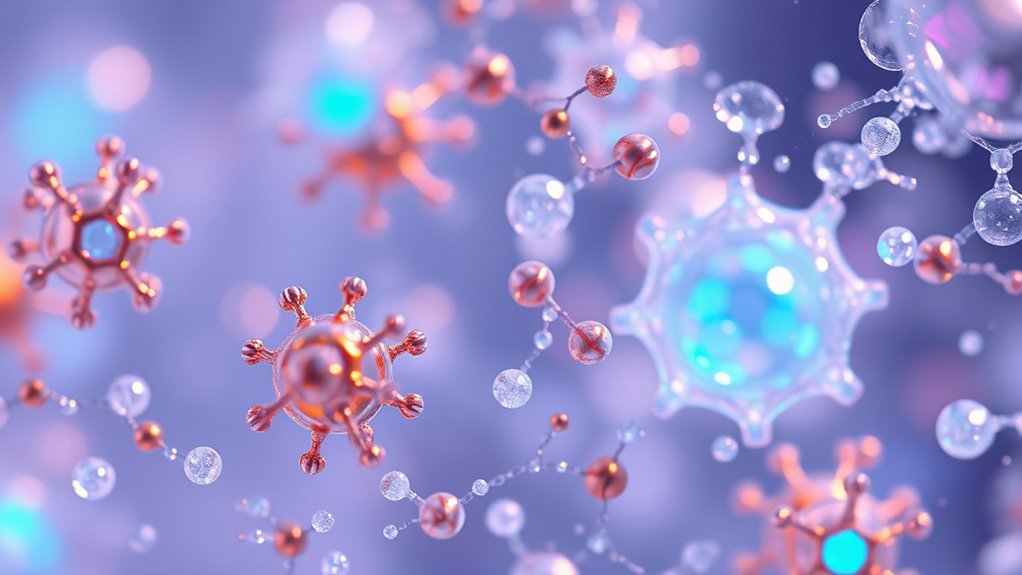
Nanoenzymes are engineered nanomaterials that mimic natural enzymes’ catalytic functions, offering distinct advantages over their biological counterparts. You benefit from their enhanced stability, as they resist denaturation under extreme pH, temperature, and chemical conditions. Unlike natural enzymes, nanoenzymes can be produced more consistently and in large quantities, ensuring reliable performance. Their small size increases surface area, boosting catalytic activity and enabling faster reactions. You also gain from their tunability; by modifying their composition, you can tailor their properties for specific applications. Additionally, nanoenzymes often exhibit lower production costs and longer shelf life, making them attractive for industrial and biomedical uses. These features combine to make nanoenzymes versatile tools that outperform traditional enzymes in many challenging environments. High surface area enhances their catalytic efficiency further, making them highly effective in various applications.
Types and Classifications of Artificial Enzymes
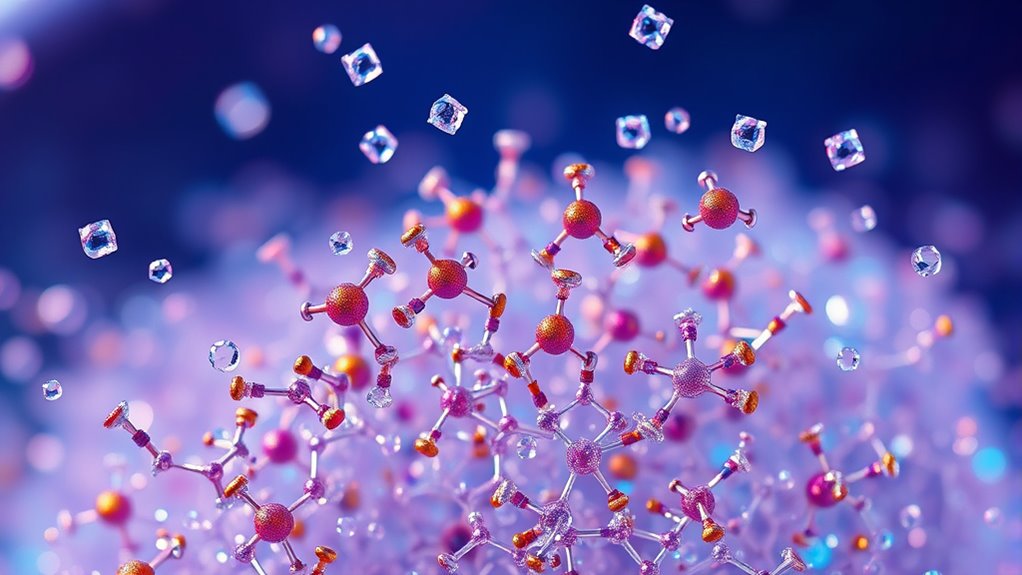
You’ll find that artificial enzymes can be classified into natural and synthetic types, each with distinct features. In addition, catalysts are often categorized as inorganic or organic, depending on their composition. Understanding these differences helps you choose the right enzyme for specific applications. Moreover, the classification of artificial enzymes is an example of how creativity can be applied to scientific innovation, enabling tailored solutions for diverse fields.
Natural vs. Synthetic Enzymes
While natural enzymes are biological catalysts produced by living organisms, synthetic enzymes are engineered to mimic or even enhance these functions. Natural enzymes are highly specific, biodegradable, and operate under mild conditions. Synthetic enzymes, or artificial enzymes, include nanozymes, enzyme mimetics, and catalytic nanomaterials designed to replicate enzyme activity. They often offer greater stability, cost-effectiveness, and tunability. To compare, consider this table:
| Feature | Natural Enzymes | Synthetic Enzymes | Common Examples |
|---|---|---|---|
| Origin | Biological organisms | Man-made, engineered | Nanozymes, metal complexes |
| Stability | Sensitive to environment | More stable, robust | Metal oxide nanozymes |
| Cost & Production | Expensive, complex | Cheaper, scalable | Peroxidase mimics |
Additionally, advancements in enzyme engineering have led to the development of more efficient and versatile artificial enzymes to meet various industrial and biomedical needs.
Inorganic vs. Organic Catalysts
In the domain of artificial enzymes, catalysts are broadly classified into inorganic and organic types based on their composition and mechanisms. Understanding these differences helps you choose the right catalyst for your application. Here are key points:
- Inorganic catalysts include metal-based options like nanoparticles and metal oxides, often offering high stability and reusability.
- Organic catalysts are typically enzyme mimics made from organic molecules or polymers, providing specificity and biocompatibility.
- Mechanisms differ: inorganic catalysts usually rely on surface interactions, while organic ones often mimic natural enzyme active sites.
- Applications vary: inorganic catalysts excel in harsh conditions, whereas organic catalysts suit biological or sensitive environments.
- When selecting catalysts, considering the personality traits of the material can influence performance and integration in various settings.
Knowing these distinctions enables you to select the most effective catalyst for your needs.
Methods of Synthesis and Fabrication
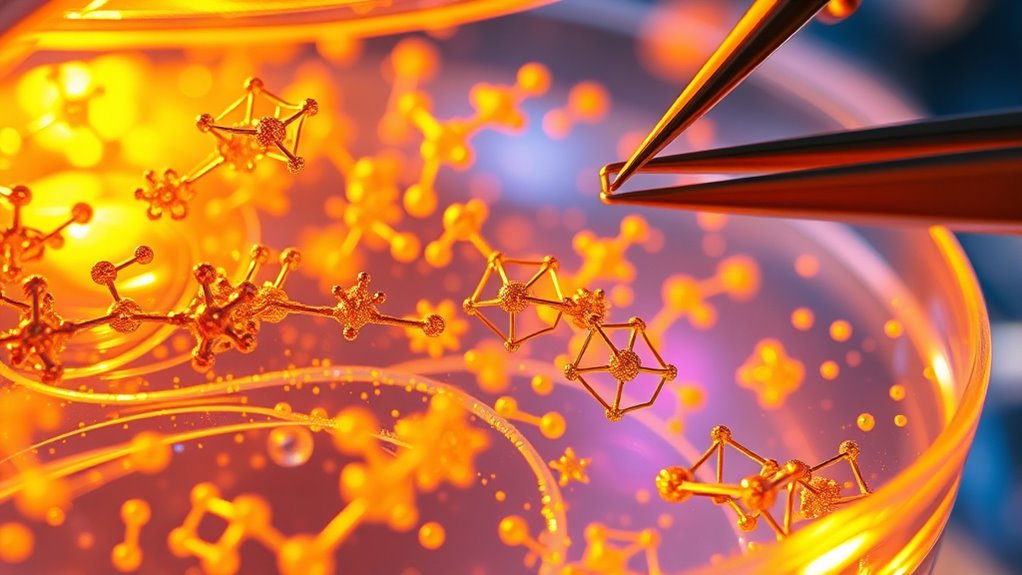
You can create nanoenzymes through various methods, including chemical synthesis techniques that allow precise control over structure. Physical fabrication methods, such as top-down and bottom-up approaches, offer alternative ways to build functional nanomaterials. Additionally, biological mimicry approaches enable you to design artificial enzymes that closely resemble their natural counterparts. Understanding the Greek Sceptic perspective on scientific skepticism can help you critically evaluate the development and application of these nanomaterials.
Chemical Synthesis Techniques
Chemical synthesis techniques for nanoenzymes and artificial enzymes involve precisely assembling nanostructures with specific catalytic properties. You can achieve this through various methods, each tailored to produce desired features. Here are four common techniques:
- Co-precipitation – You mix precursor solutions, causing nanoparticles to form as solids that can be functionalized for enzyme-like activity.
- Sol-gel synthesis – You convert solutions into gels, then calcine to produce uniform nanostructures with controlled composition.
- Hydrothermal synthesis – You heat precursors in a sealed vessel, enabling crystalline nanomaterials with tailored shapes and sizes.
- Template-assisted synthesis – You use templates or scaffolds to guide the formation of nanostructures with specific geometries.
These methods enable precise control over composition, size, and surface properties, essential for functional nanoenzymes. Understanding family backgrounds can influence the design of biomimetic catalysts by providing insights into natural enzyme structures and functions.
Physical Fabrication Methods
Physical fabrication methods involve directly manipulating materials to create nanoenzymes and artificial enzymes with specific structures and functions. These techniques often include top-down approaches like lithography, where you pattern and etch materials at the nanoscale to form precise shapes. You might also use mechanical methods such as milling or grinding to reduce particle size, enhancing surface area and catalytic activity. Another common approach is physical vapor deposition, where you deposit thin films of materials onto substrates to control morphology. These methods allow you to tailor the size, shape, and surface properties of nanoenzymes without relying on chemical reactions. Physical fabrication provides precise control, making it a versatile option for designing nanoenzymes suited to specific applications. Additionally, understanding resources and tools available can significantly enhance the effectiveness of physical fabrication techniques.
Biological Mimicry Approaches
Biological mimicry approaches to synthesizing nanoenzymes and artificial enzymes replicate natural biological structures and processes to achieve high specificity and efficiency. You can harness these strategies through several methods:
- Biomimetic Catalysts: Designing nanostructures that imitate enzyme active sites, enabling specific substrate binding.
- Protein Engineering: Modifying or synthesizing enzymes to enhance stability and activity under desired conditions.
- Self-Assembly: Using biological molecules like peptides or DNA to form complex nanostructures that mimic natural enzymes.
- Biomineralization: Employing biological processes to deposit minerals onto templates, creating enzyme-like nanocomposites.
These approaches allow you to closely emulate natural enzymes, resulting in highly selective and efficient catalytic systems suitable for diverse applications.
Applications in Medicine and Healthcare
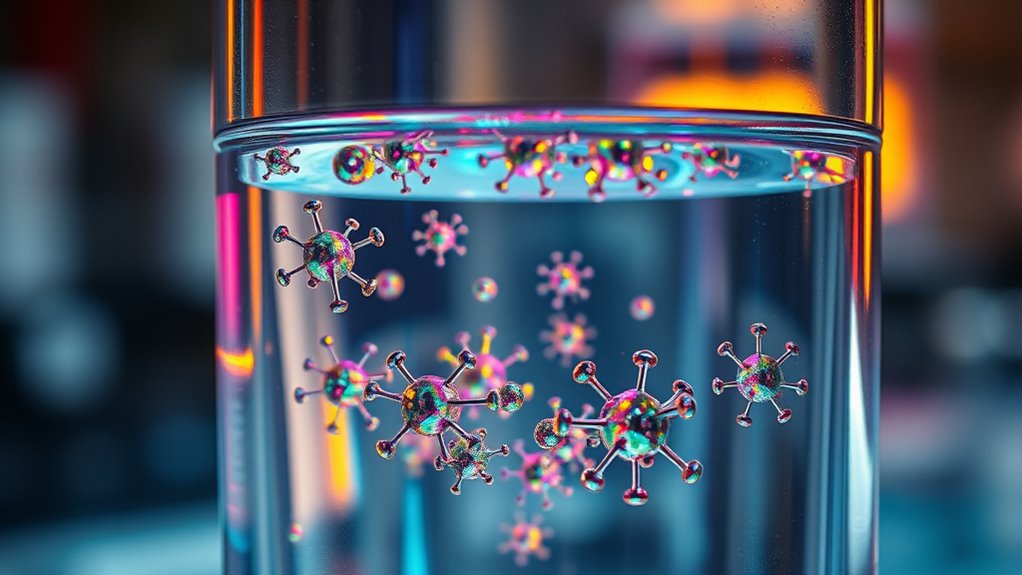
Nanoenzymes and artificial enzymes are transforming medicine and healthcare by offering more precise, efficient, and adaptable solutions for diagnosis and treatment. They enable faster, more accurate detection of diseases through sensitive biosensors, improving early diagnosis. In targeted therapy, these enzymes help deliver drugs directly to affected cells, reducing side effects and increasing effectiveness. They also play a role in breaking down harmful substances or pathogens, aiding in infection control. Their stability under various conditions makes them suitable for long-term use in medical devices. Additionally, nanoenzymes can be integrated into wound dressings to promote healing and prevent infections. Overall, these innovations enhance patient care by providing smarter, more responsive tools for managing health conditions. AI security technologies are increasingly supporting the development and deployment of these medical solutions by ensuring data integrity and safeguarding patient information.
Environmental Benefits and Uses
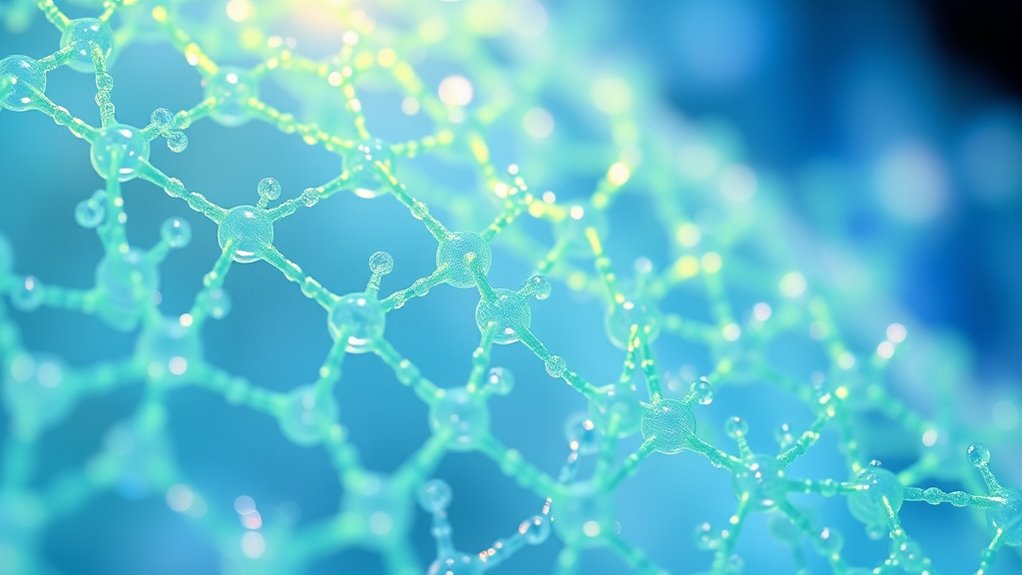
Building on their medical applications, nanoenzymes and artificial enzymes are also making a significant impact in environmental protection. They help address pollution and waste management challenges efficiently. Here’s how they make a difference:
- Break down pollutants in water and air, reducing harmful chemicals.
- Enable eco-friendly wastewater treatment by degrading organic contaminants.
- Facilitate pollution sensors that quickly detect toxins and pollutants.
- Promote sustainable practices by replacing less eco-friendly chemical catalysts.
- Their cost‑of‑ownership benefits, including stability and reusability, make them practical for large-scale environmental applications.
These nano-sized enzymes are highly active, stable, and customizable, making them valuable tools for environmental cleanup. Their ability to operate under mild conditions reduces energy consumption and minimizes secondary pollution. Overall, nanoenzymes and artificial enzymes serve as innovative solutions for creating a cleaner, healthier environment.
Challenges and Future Perspectives
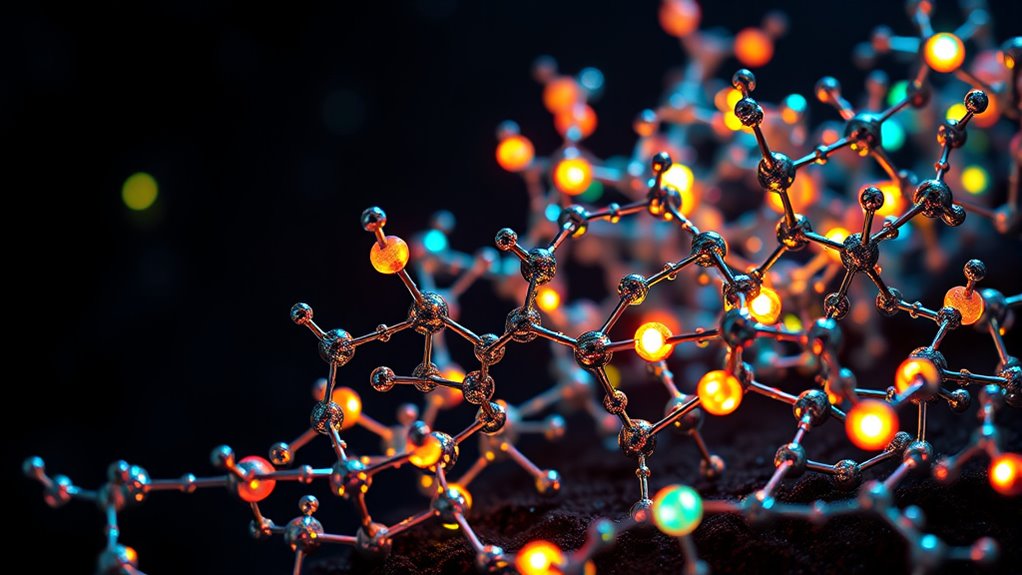
Despite their promising potential, nanoenzymes and artificial enzymes face several challenges that hinder widespread adoption. You may encounter issues with stability, as these materials can degrade or lose activity under certain conditions. Manufacturing consistency is another hurdle; producing uniform, high-quality nanoenzymes at scale remains difficult. Additionally, potential toxicity and environmental impact raise safety concerns, requiring thorough evaluation before commercial use. Cost-effective production methods are still being developed, which affects their economic viability. Future progress depends on overcoming these obstacles through innovative design, better understanding of their mechanisms, and improved manufacturing techniques. You’ll see continued research aimed at enhancing stability, biocompatibility, and scalability, ultimately paving the way for broader applications in medicine, industry, and environmental protection. Moreover, addressing product variability in manufacturing processes will be essential for ensuring reliable performance and regulatory approval.
Comparing Nanoenzymes With Natural Enzymes
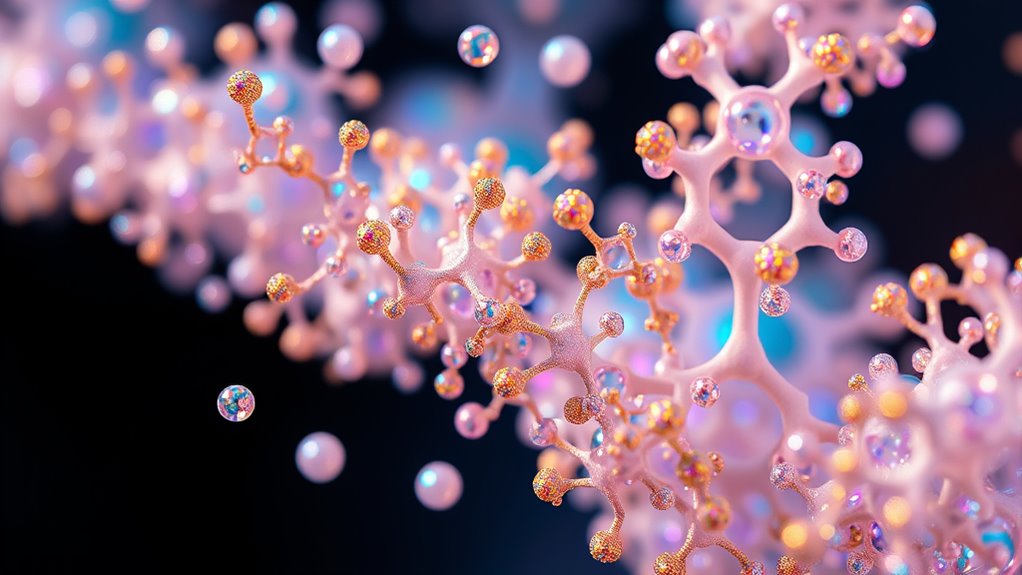
While nanoenzymes and artificial enzymes hold great promise, understanding how they compare to natural enzymes is key to evaluating their potential. Natural enzymes excel in specificity, efficiency, and adaptability within biological systems. Nanoenzymes, however, often offer enhanced stability and ease of production. Here’s how they compare:
- Specificity: Natural enzymes target specific substrates, reducing side reactions. Nanoenzymes may have broader activity but less precision.
- Stability: Nanoenzymes withstand harsh conditions better than natural enzymes, which can denature outside their ideal environment.
- Cost: Nanoenzymes are typically cheaper to produce and store than natural enzymes, which require complex extraction and preservation.
- Biocompatibility: Natural enzymes are inherently biocompatible, while nanoenzymes may need surface modifications for safe use in vivo.
Understanding these differences helps you choose the right enzyme type for your application.
Frequently Asked Questions
What Are the Potential Ethical Concerns Surrounding Nanoenzyme Use?
You might worry about potential ethical concerns like environmental impact, safety risks, and unintended consequences. The possibility of misuse or harmful effects on ecosystems could arise if nanoenzymes are not properly regulated. Additionally, privacy issues might come up if they’re used in medical or surveillance contexts. As you consider their development, guarantee strict oversight and transparent research to prevent ethical dilemmas and protect public health and the environment.
How Do Nanoenzymes Impact Human Health Long-Term?
You might not realize it, but around 60% of people are exposed to nanoenzymes daily through medical treatments and consumer products. Long-term, these tiny catalysts could pose health risks, such as unexpected immune responses or accumulation in your body. While research is ongoing, it is crucial to stay informed and cautious, as the full impact on your health remains uncertain. Regular check-ups and staying updated on new findings can help protect you.
Can Nanoenzymes Be Customized for Specific Industrial Processes?
Yes, you can customize nanoenzymes for specific industrial processes by adjusting their size, shape, and surface chemistry. This allows you to enhance their stability, activity, and selectivity for targeted tasks. You might modify their surfaces with specific functional groups or coatings, improving their compatibility with industrial environments. Customization helps optimize efficiency, reduce costs, and improve process outcomes, making nanoenzymes versatile tools for various industrial applications.
What Regulatory Hurdles Exist for Nanoenzyme Commercialization?
You’ll face regulatory hurdles like ensuring safety, environmental impact, and consistent manufacturing standards. Agencies require thorough testing to demonstrate that your nanoenzymes won’t pose health or ecological risks. Managing approval processes can be lengthy, involving multiple reviews and compliance with existing regulations. You also need clear documentation and quality controls. Staying updated on evolving policies is crucial, as regulatory landscapes for nanomaterials continue to develop worldwide.
Are There Any Known Environmental Risks of Nanoenzyme Disposal?
Yes, there are environmental risks associated with nanoenzyme disposal. You might worry about their potential to accumulate in ecosystems, disrupt microbial communities, or cause toxic effects in plants and animals. Because nanoenzymes are small and reactive, they can persist or transform into harmful compounds. Proper disposal and regulation are essential to mitigate these risks. You should stay informed about ongoing research and guidelines to ensure safe handling and disposal practices.
Conclusion
So, now you know nanoenzymes and artificial enzymes aren’t just sci-fi fantasies—they’re the superheroes of science, minus the capes. They tackle medical mysteries and clean up the planet, all while making natural enzymes look like ancient relics. Who needs traditional biology when you can have tiny, mighty, man-made marvels? Just imagine, the future of enzyme work might soon be in your pocket—literally—if you don’t blink first. The enzyme revolution is here, and it’s hilarious.
